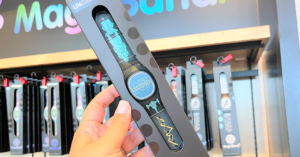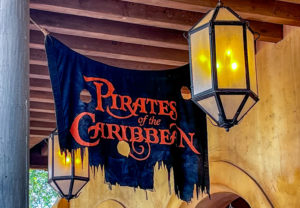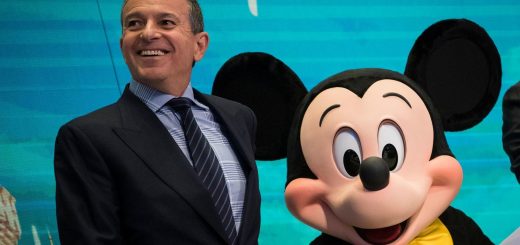Lessons Disney Could Learn from Universal Studios
Okay, we’re all Disney fans, and we don’t like to admit that any competition exists for our favorite brand. I get that.
Still, Universal Studios has undeniably increased its foothold in the theme park space over the past 15 years.


Image Credit: Universal Orlando
That’s not a bad thing for Disney, either. Finally, the Mouse can look at the competition for ideas regarding future improvements.
Here are a few lessons Disney could learn from Universal Studios.
Consider Outsourcing


I recently had the pleasure of speaking with former Disney Imagineers Ryan Harmon and Joe Lanzisero of Zeitgeist Design + Production.
During our conversation, Harmon, the company’s President, mentioned the following:


Photo: Universal
“(By) utilizing outside vendors, (Universal) can be faster and more nimble. If you want to get paid, you’ve got to deliver by this date.”
There’s something telling in this statement. Disney’s self-reliance and vertical integration have caused some unintended consequences.


Photo: Disney
The salaried Disney employees participating in the process lack a short-term incentive to complete a project.
Sure, everyone wants to finish an assignment to move on to the next thing.


Photo: Disney
This behavior differs from the benefits of outside vendors, though. When you hire someone to build something for you, they work on a different timeline.
Their goal is to create a solid product quickly so that they can earn money faster.


(Christian Thompson/Disneyland Resort)
Walt Disney appreciated this fact and happily outsourced during the creation of Disneyland. Are you familiar with Arrow Dynamics?
Historians should probably credit the company more for its contributions to Disneyland.


Photo: Disney
Arrow Dynamics employees worked on Mad Tea Party, Mr. Toad’s Wild Ride, and Snow White’s Scary Adventures. The company is also responsible for Autopia, Dumbo the Flying Elephant, and later, Matterhorn Bobsleds.
Uncle Walt understood that his workers couldn’t do everything involved with Disneyland. Instead, he picked outsiders for some tasks.


PhotoL Disney
The last time that Disney tried this approach on a significant project, it got burned a bit. The MyMagic+ project utilized outsourcing.
One group, Frog Design, famously clashed with Disney Imagineers during the creation of MagicBands.


MagicBand+
Perhaps this experience soured Disney on outsourcing, but the company needs more fresh eyes examining new opportunities.
Many businesses are hungry for Disney money and willing to work faster to get it.
Escape Intellectual Property Overreliance
Photo:visitorlando.com
The unmistakable truth is that Disney has become too reliant on intellectual properties (IP) and branding at the parks.
Think about the currently announced projects coming soon to the parks. We have:
- An Avatar Experience at Disneyland
- Arendelle Themed Land
- Journey of Water | Inspired by Moana
- Tiana’s Bayou Journey
- Zootopia Themed Land


Photo: Disney
Arendelle and Zootopia will debut at international theme parks, but they belong in this conversation as well.
Disney has closed the doors on new creations or outside IP usage. And that’s a problem.


For many years, fans at Disney’s Hollywood Studios gravitated to the park for Twilight Zone Tower of Terror.
When a flock of festival fans stood in line for a popcorn bucket last year, it wasn’t for a character from a Disney movie or TV show. It was Figment.


As Ryan Harmon aptly summarizes, “Disney used to be the place of great history and human stories.”
Now, everything at the park stems from creations in other parts of Disney’s empire. We’re not getting anything new here.


Photo: Disney
In short, Disney is robbing guests of daring characters like The Yeti from Matterhorn Bobsleds/Expedition Everest.
We don’t get The Bride or Hatbox Ghost or Madame Leota now.


Photo Credit: Disney
Harmon expresses the frustration that Imagineers feel due to Disney’s overreliance on IP.
“We (theme park designers) want to start with a blank sheet of paper and create great experiences like Joe (Lanzisero) did with Mystic Manor.”


Wouldn’t we all love an entirely new attraction like Mystic Manor at Walt Disney World/Disneyland?
I understand what Disney’s marketing research indicates on this topic. Yes, IP drives demand for attractions, but so does an entirely new story that’s great!


Photo: Universal
Honestly, Universal is no better than Disney in overusing IP. However, Universal has sagely chosen viable outside properties like Nintendo and Harry Potter.
Ignore Criticism More


Photo: Disney
Here’s a hot-button topic that’s come up a lot recently.
No matter what Disney does, especially at the parks, it cannot win.


Consider two recent examples. Park officials chose to modernize Pirates of the Caribbean, which is perfectly in keeping with Walt Disney’s philosophy.
Here’s the pertinent quote that has stood the test of time:


Photo: Disney
“The park means a lot to me in that it’s something that will never be finished. Something that I can keep developing, keep plussing and adding to—it’s alive. It will be a live, breathing thing that will need changes.”
In other words, Walt Disney WANTS his parks to remain current with the times.


Photo: Disney
Not coincidentally, Disney is updating the former Splash Mountain space into a new attraction, Tiana’s Bayou Adventure.
Fans of the defunct attraction aren’t crazy about this change, nor did they like the rumor that Walt Disney’s Enchanted Tiki Room may close.


Image Credit: Walt Disney Family Museum
Disney itself smacked down the rumormonger about the Tiki Room closure when that happened a few years ago. The point remains, though.
Should Disney worry so much about external criticism? Shouldn’t leadership at the parks decide what happens next?


Photo: Pexel.com
Universal Orlando Resort has permanently closed several attractions since the start of 2022. Could you ever imagine Disney doing that?
I’d like Disney officials to act a bit more fearlessly in plotting the next decade at the parks.
Streamline the Process


Photo: Disney
Here’s a quote former Imagineer Ryan Harmon said:
“Disney, you go to a meeting, and there’s literally 40 people that show up, and really only four need to be there.”


Photo: Disney
Just think about that for a moment. While none of us will ever know what it’s like to be an Imagineer and create theme park attractions, this aspect is relatable.
The overwhelming majority of professionals have joined a meeting, whether it’s at the office or via Zoom, and realized too many people were there.


Photo: Josh D’Amaro/Instagram
What happens when a conversation includes more employees than needed? Distractions abound, and most voices get shouted down by the outspoken few.
Universal deftly sidesteps this problem by streamlining its participants during the creative process.


Photo: Disney
With few people involved, everyone who matters to the discussion has a say.
Also, with fewer decision-makers involved, you don’t need to climb the food chain as much.
Someone involved in the conversation can probably choose what happens next during design/construction.


Photo: Disney
If not, the small group likely communicates with only one or two others to receive the go-ahead to advance to the project’s next stage.
While Comcast, the corporate owner of NBCUniversal, employs roughly as many people as Disney (190,000 vs. 220,000 at last estimate), Universal Studios controls its own fate.


Photo:nbcuniversal
The current Disney infrastructure has reduced the power of those on the ground floor designing/building the projects.
Thankfully, Bob Iger understands this fact. One of his mission statements as a leader has been empowering creatives.


Photo: MickeyBlog
Thanks for visiting MickeyBlog.com! Want to go to Disney? For a FREE quote on your next Disney vacation, please fill out the form below, and one of the agents from MickeyTravels, a Diamond Level Authorized Disney Vacation Planner, will be in touch soon!
Feature Photo: Disney/Universal









